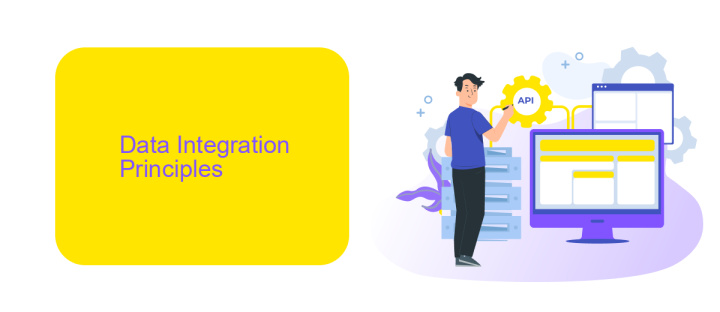Data Integration Rules
Data integration is a critical process in modern businesses, enabling seamless connectivity and collaboration across various data sources. Effective data integration rules ensure that data is accurately combined, consistent, and easily accessible. This article explores the fundamental principles and best practices for establishing robust data integration rules, essential for maintaining data integrity and optimizing organizational efficiency.
Introduction
Data integration is a critical aspect of modern business operations, enabling organizations to consolidate information from various sources into a unified view. Effective data integration ensures seamless data flow, enhances decision-making processes, and improves overall efficiency. In this context, understanding and implementing data integration rules is essential for maintaining data quality and consistency.
- Data Mapping: Aligning data fields from different sources to ensure compatibility.
- Data Transformation: Converting data into a suitable format for integration.
- Data Validation: Ensuring data accuracy and integrity before integration.
- Data Cleansing: Removing or correcting inaccurate or incomplete data.
- Data Monitoring: Continuously tracking data integration processes for quality assurance.
Tools like ApiX-Drive facilitate the setup and management of data integrations by providing a user-friendly platform to automate data flows between various applications and services. By leveraging such tools, businesses can streamline their data integration processes, reduce manual effort, and ensure that data is consistently accurate and up-to-date across all systems.
Data Integration Principles

Effective data integration requires adherence to several key principles to ensure seamless and reliable data flow. Firstly, data consistency is paramount; all integrated data must be accurate and up-to-date across all systems. This involves regular synchronization and validation processes to prevent discrepancies. Secondly, data security is crucial; sensitive information must be protected through encryption and access controls to prevent unauthorized access and breaches. Additionally, scalability should be considered, allowing the integration solution to grow and adapt as the organization expands.
Another essential principle is interoperability, which ensures that different systems can communicate and exchange data effectively. Utilizing services like ApiX-Drive can simplify this process by providing a platform for automating data transfers between various applications without requiring extensive coding knowledge. Furthermore, maintaining data quality through regular cleansing and monitoring is vital to avoid the propagation of errors. Lastly, transparency in data integration processes helps in tracking data lineage and understanding the flow of information, which is critical for compliance and auditing purposes.
Data Governance and Data Quality

Effective data governance and data quality management are critical components for successful data integration. Establishing robust governance frameworks ensures that data is accurate, consistent, and secure across all integrated systems. This involves setting clear policies, roles, and responsibilities for data management, which helps in maintaining the integrity and reliability of the data.
- Define data ownership and stewardship roles.
- Implement data quality standards and metrics.
- Utilize data integration tools like ApiX-Drive for seamless data flow.
- Conduct regular data audits and quality assessments.
- Ensure compliance with regulatory requirements.
By adhering to these practices, organizations can achieve high data quality, which is essential for making informed decisions. Tools like ApiX-Drive can automate and simplify the integration process, ensuring that data from various sources is accurately combined and synchronized. This ultimately leads to improved operational efficiency and better business outcomes.
Best Practices and Considerations

To ensure successful data integration, it's essential to follow best practices that promote consistency, accuracy, and security. Begin by thoroughly understanding the data sources and formats you will be integrating. This foundational knowledge will help you design a robust integration strategy that minimizes data loss and errors.
Another critical consideration is the choice of tools and platforms for data integration. Utilizing services such as ApiX-Drive can streamline the process by offering automated workflows and real-time data synchronization. This not only saves time but also reduces the likelihood of human error.
- Define clear data governance policies to maintain data quality.
- Ensure data security by implementing encryption and access controls.
- Regularly monitor and audit data integration processes.
- Opt for scalable solutions to accommodate growing data volumes.
Lastly, always test your integration thoroughly before deploying it in a live environment. This helps identify potential issues early and ensures that the integrated data meets your organization’s standards. Continuous monitoring and regular updates are also crucial to adapt to any changes in data sources or business requirements.
- Automate the work of an online store or landing
- Empower through integration
- Don't spend money on programmers and integrators
- Save time by automating routine tasks
Conclusion
Data integration is a critical aspect of modern business operations, enabling seamless connectivity and data flow across various systems and applications. Establishing robust data integration rules ensures that data is accurate, consistent, and accessible, fostering better decision-making and operational efficiency. By adhering to these rules, organizations can mitigate risks associated with data silos, redundancy, and inaccuracies, ultimately enhancing the overall data quality and reliability.
Leveraging advanced integration tools like ApiX-Drive can significantly streamline the process of setting up and managing data integrations. ApiX-Drive offers a user-friendly platform that simplifies the integration of disparate systems without requiring extensive technical expertise. This not only reduces the time and effort needed for integration but also ensures that data flows smoothly and securely between applications. In conclusion, the implementation of well-defined data integration rules, coupled with the use of effective integration services, is crucial for maintaining data integrity and supporting the dynamic needs of modern businesses.
FAQ
What is data integration?
Why is data integration important?
What are the common challenges in data integration?
How can I automate data integration processes?
What are the best practices for data integration?
Do you want to achieve your goals in business, career and life faster and better? Do it with ApiX-Drive – a tool that will remove a significant part of the routine from workflows and free up additional time to achieve your goals. Test the capabilities of Apix-Drive for free – see for yourself the effectiveness of the tool.


